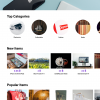
When you think about accessibility, your first thought is probably wheelchair ramps and handrails in your bathroom stalls. But accessibility is so much more than that, especially on the web. Not having an accessible website directly affects your bottom line. What’s worse, is you probably didn’t even realise it.
In other words, everyone should be able to browse, navigate, and interact with the web using any device they might have.
Main reasons why Accessibility is important
Legal
20% of the US population has a disability
May become a human right
Required by federal law
American Disabilities Act
Section 508 refresh
Moral
Universal access
Corporate Social Responsibility
People with disabilities are discriminated against
need to be able to access services and content just like everyone else
Business
Avoid lawsuits
Supports SEO and usability
Supports internationalization
Supports mobile-friendly content
Responsive Web Design makes accessibility easy with HTML 5 CSS3 and ARIA
Color Blindness
It’s almost certain that some of my friends are color blind. Heck, even I could have some sort of color blindness. Color blindness is that common.
Imagine that links are not underlined in your main content, but instead rely on a different color. How would you distinguish them if you experienced some kind of color blindness?
Here are a couple of good resources and examples of color blindness:
Jonathan Hassell’s book Including your missing 20%, these estimates are pretty accurate. He uses the United Kingdom as an example…
- Total number of disabled people in the UK: 11 million (approximately 18% of the population)
- About 7 million people have a physical impairment, of whom 2.5 million have difficulties using their hands which may impede their use of computer keyboards and more
- 1.8 million people have a vision impairment which is disruptive to their lifestyle, ranging from those who may have difficulty reading text without it being enlarged through to those who may need to zoom the display of their computer up to 16 or 32 times
- 8% of all men and 0.4 % of all women are colour blind
- Over 1 million people have mental health conditions, most of whom are unlikely to find it affects their use of the internet
One major issue which needs to change, is the attitude of companies toward Accessibility being swayed more by the legal obligations they have, rather then the moral. Many companies will do the bare minimum to fulfil the legal obligations of government accessibility requirements, which will often still lead to many users being excluded. Countries such as Norway and Sweden, where accessibility is viewed as a human right; therefore, it is possible for businesses who do not provide inclusive access to their products and services, be they digital or otherwise, to be prosecuted under a discrimination act.
Problems faced by those with disabilities cover an extremely broad spectrum, many of which are ignored even in modern day design. Public transport is still not 100% inclusive; wheelchair users and others with physical disabilities can still only use some train and bus services because of this lack of Accessibility. Web accessibility is still not adhered to on many websites. Users with colour blindness, partial sightedness and complete blindness are routinely ignored because there is no legal obligation to accommodate them, so businesses do not fear losing money from law suits.
The irony is, by having an inclusive attitude to accessibility, and by fulfilling their moral obligation toward accessible products and services, the same companies would be increasing their user base by upward of 20%. Many users of products and services who do not currently have a disability, will have one in a number of years. So you are actually accommodating a portion of your existing users in the future by being completely accessible.
100% accessibility means great UX for ALL customers, not just those with additional accessibility needs. Improving the accessibility of a product or service will improve its usability overall and in turn have a larger user base. This is beneficial for all businesses, websites and services at every level, and there’s no excuse for ignoring it in the modern world.


